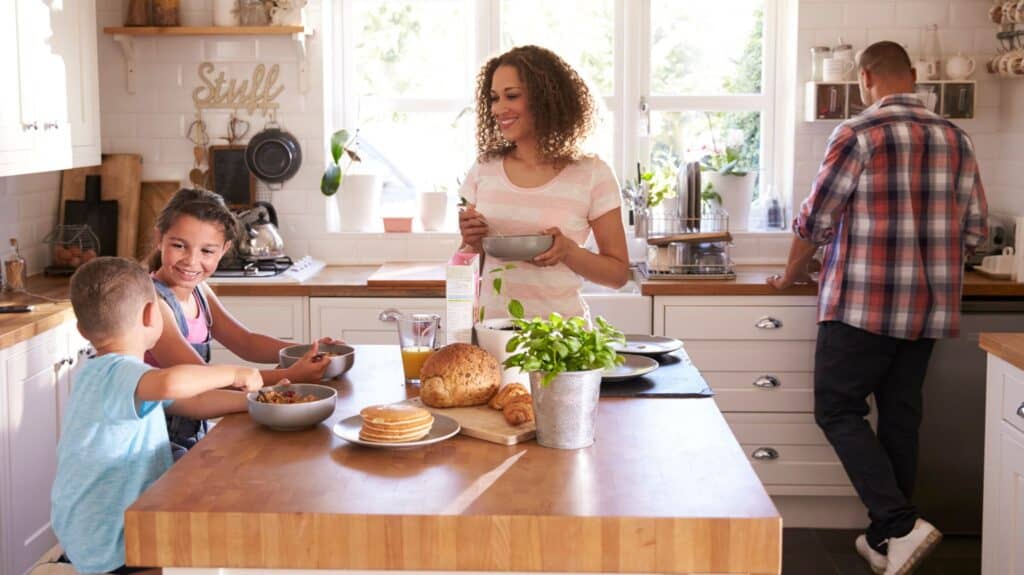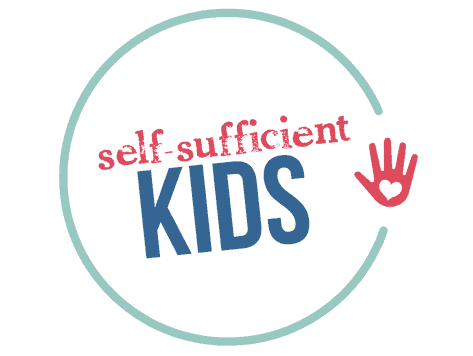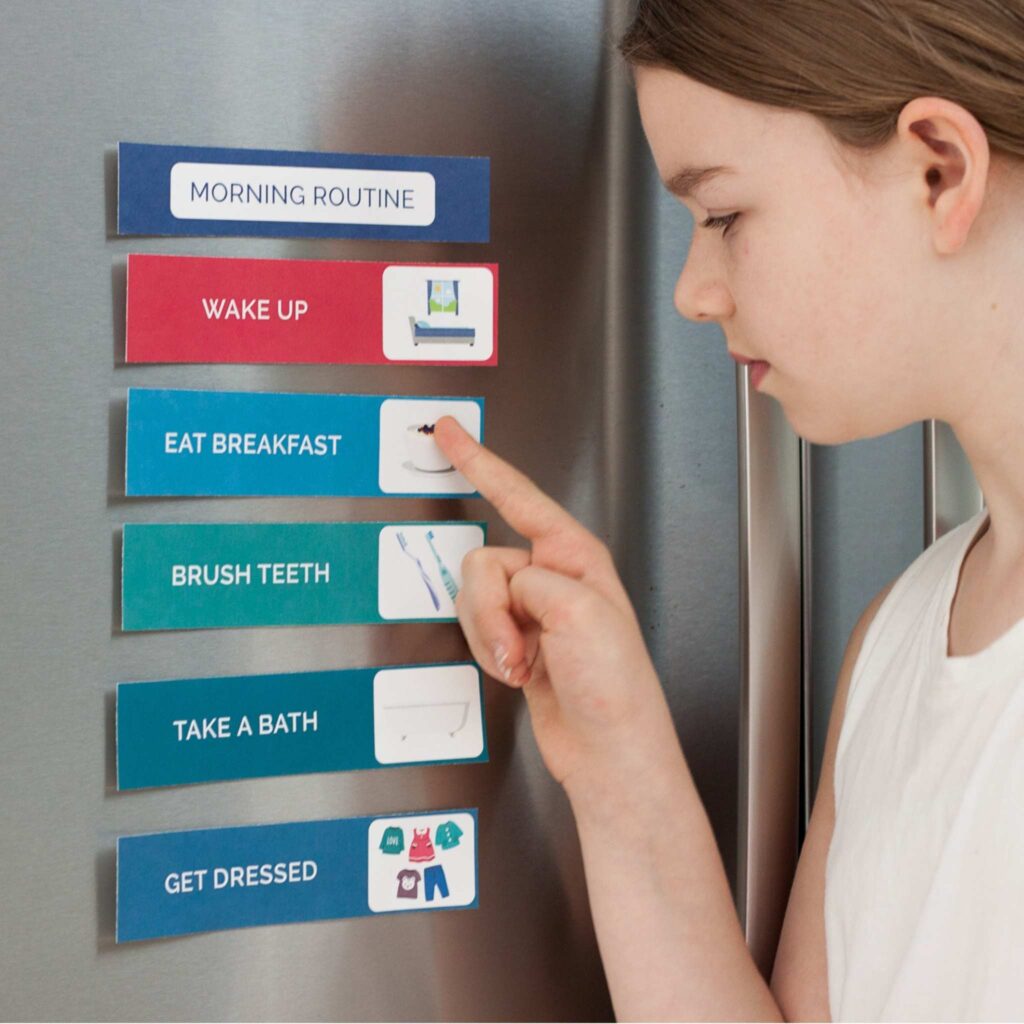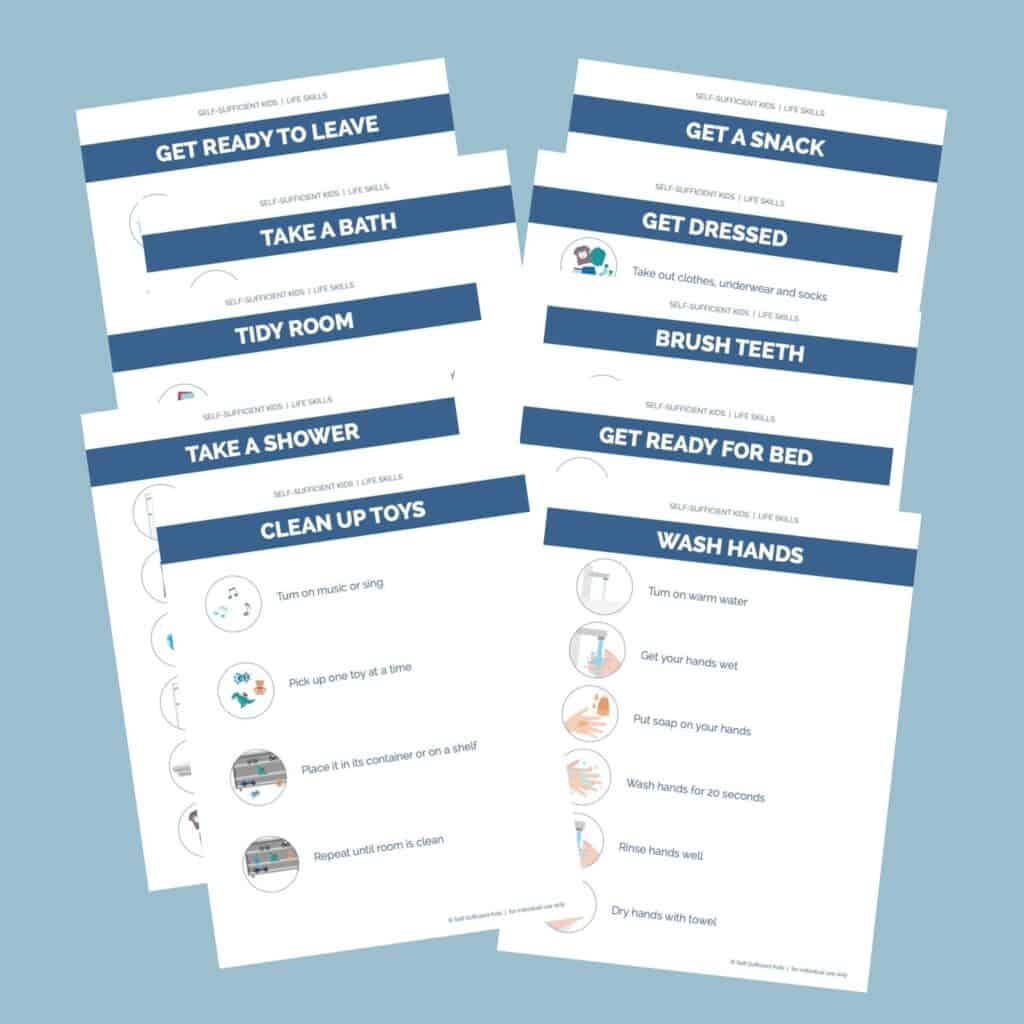How to Establish a Calm Morning Routine for Kids That Actually Works
Inside: Five ideas to establish a calm morning routine for kids that they’ll actually follow

From the moment your alarm goes off in the morning the race is on.
Waking your kids up, feeding them, getting them dressed and out the door (and yourself too!) can feel like a mad dash…and on some mornings nearly impossible.
Maybe your child doesn’t wake up in a good mood or they drag their feet eating breakfast or getting dressed.
Mornings can be an especially stressful time for families. But with a little advanced planning and cooperation, coming up with a morning routine that works for everyone is possible.
Here are a few tips to help everyone get out the door (without a fight) in the morning:
Start with sleep
Making sure your child gets enough sleep is the essential first step to trying to have a calm, successful morning.
If you aren’t sure how much sleep your child needs, this chart can help:
| Age Range | Recommended Hours of Sleep | |
| Newborn | 0-3 months old | 14-17 hours |
| Infant | 4-11 months old | 12-15 hours |
| Toddler | 1-2 years old | 11-14 hours |
| Preschool | 3-5 years old | 10-13 hours |
| School-age | 6-13 years old | 9-11 hours |
You can improve your child’s sleep by making sure they get to bed early. Research shows that the quality of sleep both kids and adults receive earlier in the evening is better than if they fall asleep later.
Of course, getting kids to sleep is a universal problem for many families. This resource provides tips on how to get your kids to fall asleep more easily.
Prepare the evening before
In order to minimize the morning rush, it can be helpful to have both you and your children get as much prep done the evening before as possible.
One mother went as far as having her child sleep in the clothes she was going to wear the next day in lieu of pajamas.
While not everyone needs to go to those extremes, these tasks can be taken care of the evening before:
- Lay out the next day’s clothes
- Take a bath or shower
- Pack lunches
- Pack your child’s backpack (or have them do it)
- Pack any sports or after-school activity outfits, gear, etc.
- Program your automatic coffee maker
- Have easy breakfast options ready such as muffins, protein bars, toast or cereal
Get your kids involved in creating a morning routine
Kids thrive on routines. As their executive functioning skills are still developing, kids need routines to give them cues about what to do next. Routines also provide younger kids will security and can help focus easily distracted young minds.
But rather than create a routine alone, get your kids involved to give them a sense of ownership and increase their enthusiasm to follow it.
Schedule some time with your child just before the school year begins, or on the weekend if school’s already started, and create a routine together. If your child’s proposed order of activities doesn’t sound logical to you, ask questions to see if they can arrive at your understanding. Also, let your child know that you may need to discuss changes to the routine in the future if some aspect of isn’t working out.
Having a visual reminder of your routine helps keep everyone on the same page and allows your child to follow the routine independently.
Sample routines:
Here are a few sample routines for different age groups to help you and your kids get started creating your own:
Stay-at-home toddler:
- Wake up
- Snuggle with parent/read a book
- Use the potty
- Wash hands
- Eat breakfast
- Brush teeth
- Brush hair
- Get dressed
- Playtime
- Snack
Preschooler:
- Wake up
- Snuggle with parent/read a book
- Use the potty
- Wash hands
- Eat breakfast
- Brush teeth
- Brush hair
- Get dressed
- Playtime
- Pack backpack (if not done the night before)
- Put on shoes and/or a coat
- Leave for school
School-aged child:
- Wake up
- (Optional) snuggle with parent
- Use the potty
- Wash hands
- Eat breakfast
- Floss and brush teeth
- Brush hair
- Get dressed
- Make bed
- Pack backpack and lunch box (if not done the night before)
- Check after school activities and pack appropriate gear/supplies (if not done the night before)
- Put on shoes and/or coat
- Leave for school
Calm your crazy mornings (and afternoons, and evenings!) with these routine cards for kids. These cards allow kids to independently check what they need to do and in what order – so you don’t have to remind them! Click here or the image below to learn more.
Place checklists in bathrooms and by the back door
Just like routines can help guide your child through their morning, checklists can help remind them of specific tasks.
Say, for example, your seven-year-old needs a few reminders of the steps to take when in the bathroom. It could be helpful for them to see a list written out as a reminder, such as this one:
Bathroom Checklist:
- Use the potty
- Flush toilet
- Wash hands
- Floss and brush teeth
- Brush hair
Checklists can also be a life saver as a reminder of what to pack for the day. It’s helpful to place these lists by the door where your family exits your house. A standard one might include:
Getting Ready to Leave for School Checklist:
- Place lunch and homework in backpack
- Pack any sports equipment or clothes
- Check the weather
- Put on coat or pack one in bag
- Put on appropriate shoes
It’s often difficult for kids to remember what activities they have each day so having a list by the door you leave from can remind them if they need to pack any gear or supplies. Here’s an example:
Afternoon Activities Reminder:
- Monday: Dance
- Tuesday: Soccer
- Wednesday: Nothing
- Thursday: Art class
- Friday: Soccer
Help guide your young child through everyday tasks with these Simple Directions for Young Children Cards. Each card serves as a reminder of how to carry out a task and allows children to eventually take on tasks independently. Click here to learn more.
Help set a good morning mood
Just like adults, kids can sometimes feel a bit groggy in the morning, setting off a not-so-good mood. And that not-so-good mood can get in the way of making a smooth transition from home to daycare, preschool or school.
There are a few things you can try to help your child wake up on the right side of the bed so-to-speak:
- As you wake your child up, give them a big kiss and cuddle
- Turn on soothing music
- Talk about the fun things that are going to happen that day
- Lay with them in bed for a minute or two to help connect
- Read them a short book as they come out of their slumber
It can also be helpful to talk about this transition time with your child when you create your routine. Ask them what they think may help. Your child may not have an immediate answer, but asking the question will get them thinking about it. Then, revisit this question later when your child may be more aware of their needs.
Eat a nutritious breakfast
Something else that can contribute to a good morning mood is eating a nutritious, healthy breakfast.
When kids skip breakfast or mainly eat sugar for breakfast, their moods suffer as well as their ability to concentrate and do their best throughout the day.
Starting with a good, nutritious breakfast such as low-sugar cereal or oatmeal, toast, yogurt, peanut butter, avocado, eggs, and/or fruit can keep kids fueled throughout the morning. It’s also important to make sure kids rehydrate after their night rest.
If you’re limited on time in the morning, have ready protein bars, low-sugar muffins or low-sugar granola bars as well as a water bottle or other container filled with milk or some juice. That way your child can grab these breakfast foods to eat as they travel to daycare or school.
See related: How I Raised Kids Who (Willingly) Eat Vegetables, Adore Fruit, and Make Healthy Food Choices on Their Own
Tame the morning beast
With a bit of advanced planning and preparation, as well as your kids’ involvement in creating a routine, you can transform your morning from a hectic race to a calmer, easier walk.
It may take time to slide into the perfect morning routine for your kids but the effort is worth it. A calm (or at least calmer) morning can set the pace for the entire day, reducing emotional flare-ups or squabbles, and allow your kids get the most out of their school experience.
See related:
The Perfect Bedtime for Kids and How Long They Need to Sleep
6 Ways Kids Routines Encourage Independence and Bring More Sanity to Your Life
The (Super Easy) Trick to Help Kids Get Ready for School Independently
10 Responsibilities at Home That Make Kids Feel Capable and Significant
How to Stop Doing Everything for Your Child and Teach Responsibility
What to do next…
1. Subscribe to Self-Sufficient Kids’ email list.
Like what you read here and want to learn more? Every Thursday I’ll send you one parenting tip about raising self-sufficient kids and creating the peaceful relationship you yearn to have with your child. Click here to sign up.
2. Take one of my quizzes!
Find out if you’re raising a self-sufficient kid (click here) or if you’re doing too much for your kids (click here). At the end of each quiz, you’ll be asked to provide your email address to see the results.
3. Get your kids started on chores.
Learn how to get your child started on chores (& keep them motivated + avoid power struggles) by enrolling in my Get Your Kids Successfully Started on Chores course. Click here to learn more and sign up.

About Kerry Flatley
Hi! I’m Kerry, the mother of two girls and a certified parent educator. I believe it is possible for parents to have a supportive, loving, and warm relationship with their kids while raising them to be independent and ultimately self-sufficient. Over the years, I’ve read numerous books and articles that support this belief and I’ve put these ideas into practice with my own kids. Read more about me and Self-Sufficient Kids here.



